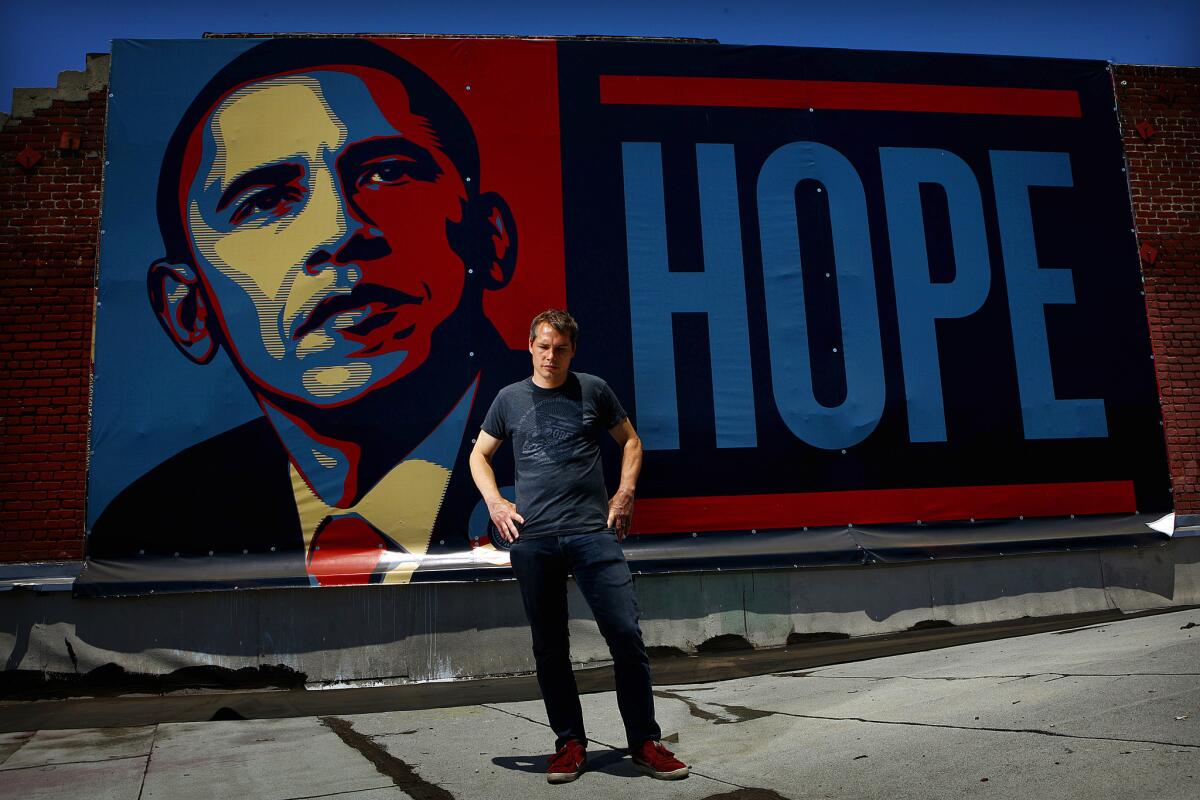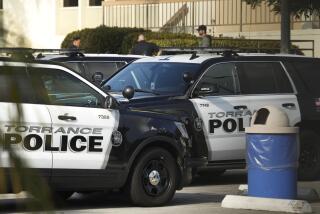Detroit won’t have street artist Shepard Fairey extradited from L.A. after arrest

Shepard Fairey poses on a roof top in front of his “Hope” poster on July 2, 2008.
Best known for the iconic “Hope” poster used in Barack Obama’s first presidential campaign, street artist Shepard Fairey was recently detained by police as he passed through customs at Los Angeles International Airport.
Fairey was wanted by authorities in Detroit, where he was being sought on two counts of malicious destruction of property, police Sgt. Rebecca McKay told The Times last month. Investigators there allege that Fairey put up posters on private and government property, causing significant property damage.
“If you don’t have permission, it’s generally labeled graffiti and we will prosecute,” said Detroit police Officer Dan Donakowski.
So Fairey, 45, was arrested last week by Los Angeles Airport Police after screeners at LAX noticed the outstanding warrant for his arrest.
The artist was booked on a felony fugitive warrant by the Los Angeles Police Department’s Pacific Division, according to Officer Rob Pedregon, a spokesman for the Los Angeles Airport Police.
But Detroit wasn’t going to be flying some version of Axel Foley, the fictional Detroit cop played by Eddie Murphy in “Beverly Hills Cop” films, or any real cop to L.A. to pick up a graffiti scofflaw.
“If it’s a violent crime, yes, we’re going to pick up,” Donakowski said Monday. “In terms of graffiti, it’s not as high as a murder or rape or something.”
So Detroit police declined to extradite Fairey.
Instead, Detroit officials opted to begin working with Fairey’s attorney so the artist can turn himself in, Donakowski said. Fairey faces up to five years behind bars and several thousands of dollars in fines if convicted.
The artist has had a few brushes with the law in recent years. In 2009, he was arrested in Boston on charges related to illegal tagging. The arrest came around the time of his exhibition at the Institute of Contemporary Art/Boston.
He was sentenced to probation and a fine in 2012 in a criminal case involving the famous “Hope” poster. Fairey admitted to destroying documents and submitting false images during a legal fight with the Associated Press, a dispute that centered on the use of an AP photo as a model for the poster.
For breaking news in California, follow @josephserna and @MattHjourno
Staff writer David Ng contributed to this report.
More to Read
Sign up for Essential California
The most important California stories and recommendations in your inbox every morning.
You may occasionally receive promotional content from the Los Angeles Times.











